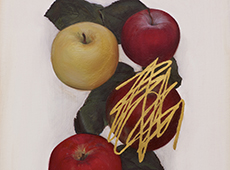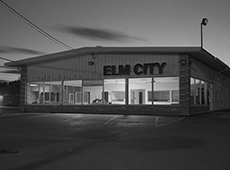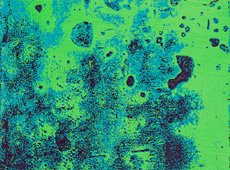One would think that, in making paintings about pattern, there would be a defined beginning and end, an image that’s certain and void of breathing room. But that’s wrong. I feel as if I never know the ending.
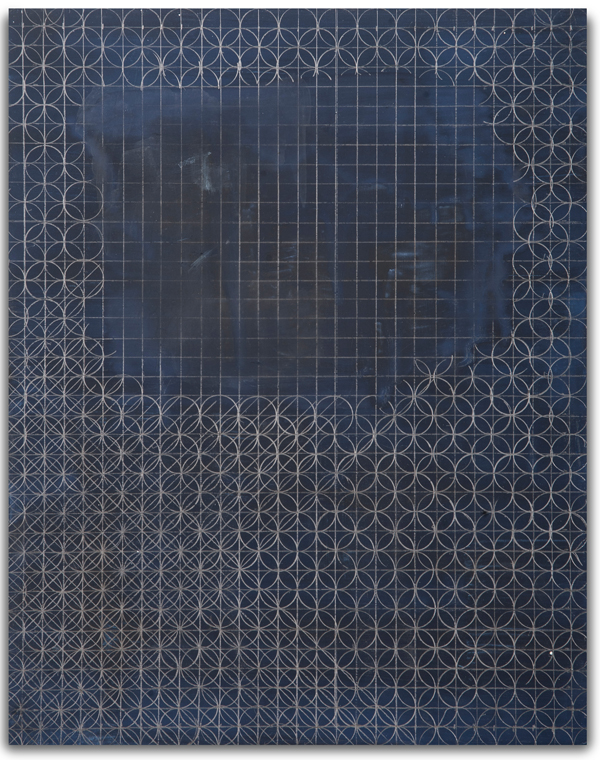
“Nocturne II,” graphite, oil and venetian plaster on panel, 7.5 x 9.5 inches, 2013. © Alison Hall.
Image courtesy of the artist.
spacer
.
A poet has written me almost every day for a year.
This constant correspondence has been ritualistic and consistent. Like my drawings. Like nothing else in my life this past year. The work in the studio and The Poet. Before our year long correspondence began, I found a poem (Dear Miss Emily) by James Galvin in my mailbox, anonymously sent, but I know it was from him, The Poet. It’s in letter form, epistolary form, perhaps predicting this year’s dialog. I love this poem. I think about its meaning often as I work in the studio.
For the past year and a half I’ve been stealing patterns out of the work of Giotto. It makes a lot of sense that I would be in love with pattern. Generations of my family worked in factories and farms where pattern, repetition and ritual are at the core of these activities. One would think that, in making paintings about pattern, there would be a defined beginning and end, an image that’s certain and void of breathing room. But that’s wrong. I feel as if I never know the ending. The mistakes keep you from knowing the ending. Daily life and heartache keep the endings elusive as well. Agnes Martin talks about the empty mind that occurs through the work. I’m not there yet, but that’s okay. These are meditations on living. Nothing empty about that.
One would think that, in making paintings about pattern, there would be a defined beginning and end, an image that’s certain and void of breathing room. But that’s wrong. I feel as if I never know the ending.
I think a lot about love and the eternal connections we have to one another. I think about Ruth Miller Forge and the day I saw her standing in the middle of her late husband’s exhibition at Betty Cunningham’s gallery in Chelsea. I was twenty-six, and I raced to the gallery on the last day, at the last hour. I think a lot about Andrew Forge. Those steady, repeating marks that bleed of empathy and kindness. When I arrived at the gallery, I found myself in the soft light of a February afternoon, alone, there with Andrew, and Ruth standing in the center of the room. Ruth felt like one of her paintings—solid and vaporous—and, at the same time, mystical. I felt their love in that space like nothing I’ve ever felt before. The eternal connection, the Eternal Present.
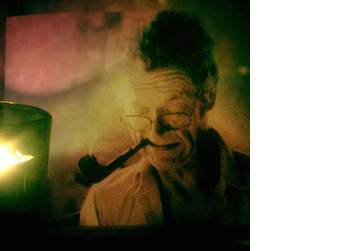
“Andrew in Candlelight.” A photo taken at Ruth Miller
Forge’s home on September 4, 2013, the 11th
anniversary of Andrew’s death. © Alison Hall.
I’m writing all of this in my studio here in Virginia. To my back is a painting I made last year, after a visit to the Arena Chapel in Padua. Like the title suggests, The Ceiling Above Us, Giotto’s Night Sky, it is about the the ceiling of the chapel. It’s a dark blue, night sky, with stars perfectly placed in a repeating pattern.
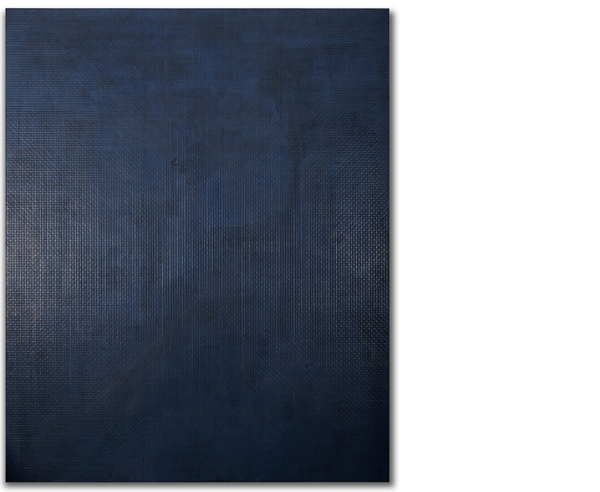
“The Ceiling Above Us, Giotto’s Night Sky,” graphite, oil and venetian plaster
on panel, 77 x 96 inches, 2013. © Alison Hall. Image courtesy of the artist.
I made the painting during one of the most significant relationship losses in my life. I thought about James Galvin’s poem during the process of making this piece. His feeling toward x’s and o’s and how we sign off. There is a 1/2 inch grid over the surface, over 40,000 inches of horizontals, verticals and diagonals (x’s) and 15,000 circles (o’s), all made with a lead pencil. The superimposing of grids and circles slowly begin to build into intersecting points that form the stars. The graphite glistens on the dark blue pigment. From afar the painting feels like a dark blue monochrome and as you move toward the painting the graphite begins to catch the light and the stars shimmer. There are many mistakes in the painting. But they are quiet. One is a hand print from a young man that works in the restaurant below my studio: it’s a greasy barbecue hand print. I tried to sand it out, repaint it and draw it multiple times: it wouldn’t budge. I love it. I love that kid for wanting to reach out and touch the painting, the stars. I spoke with a historian in the little town I live in in Italy about the significance of the night sky in the Arena chapel. Why the night sky, why stars perfectly aligned, what it means. He told me about the cloak of the Madonna, her blue cloak covered in stars. He explained to me that the sky represented her, and her heavenly love, pure love, covering the parishioners of the chapel. Heavenly love!
Today I finished a painting, The King, (too small for his crown). It is a painting based on the pattern found on the floor of the Arena Chapel. The painting is dark, my first black painting. This painting is about love of a different sort.
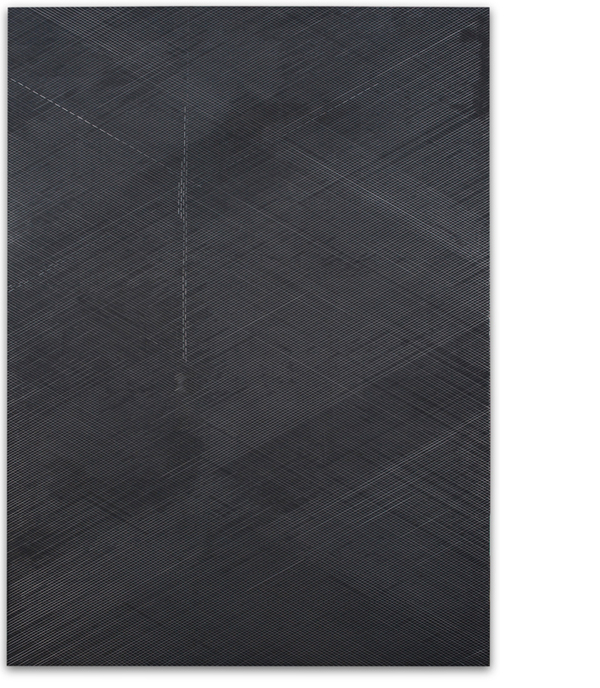
“Il Re (The King, Too Small for His Crown),” graphite, oil and venetian plaster on panel,
48 x 72 inches, 2014. © Alison Hall. Image courtesy of the artist.
The Poet has said it to me before, “LOVE IS ALL.” James Galvin says it, in his ending: “Oh, and one more thing, I send my love, However long and far it takes, through light, through time, through all of the faithlessness of man.” I repeat this stanza aloud in my studio often: I’m repeating it, sending it out to Giotto, to The Poet, to Ruth, to Andrew, to my family and dear friends.
I want to leave you with a passage that I read in Andrew’s catalog that coincided with his exhibition. In this passage he’s talking about what it felt like to make the first painting that finally was his, a true reflection of his inner world. He’s talking about beginning a painting, the first mark placed on the canvas and what happens after he makes the second mark. And I think this explains it all. The connections we have to one another, to our marks, to the vast history of painting, to our lovers and our friends.
Editor’s Recs:
Subscribe to Tilted Arc
If you like this story, please consider subscribing. We are sticklers for privacy.
We will never sell or share your e-mail address.

